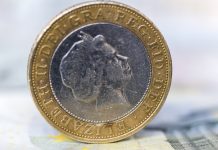The previous week was clearly divided for the pound and the US dollar. The pound powered higher across the beginning of the week, despite no solid Brexit developments. The dollar rallied across the second half of the week following a confident sounding Federal Reserve. The pound US dollar exchange rate closed the previous week at US$1.2971. This is approximately the same level that it started.
| What do these figures mean? |
|---|
| When measuring the value of a pair of currencies, one set equals 1 unit and the other shows the current equivalent. As the market moves, the amount will vary from minute to minute.For example, it could be written:1 GBP = 1.28934 USDHere, £1 is equivalent to approximately $1.29. This specifically measures the pound’s worth against the dollar. If the US dollar amount increases in this pairing, it’s positive for the pound. Or, if you were looking at it the other way around:1 USD = 0.77786 GBPIn this example, $1 is equivalent to approximately £0.78. This measures the US dollar’s worth versus the British pound. If the sterling number gets larger, it’s good news for the dollar. |
The pound initially moved higher in the previous week as speculation increased that a Brexit deal was just around the corner. Brexit will remain the key driving force for the pound this week as November 21st, the date touted by Brexit Secretary Dominic Raab, nears.
However, UK Prime Minister Theresa May’s ability to hold onto power is once again looking doubtful. On Friday her Transport Minister resigned in disagreement with the direction of Brexit. Increasing objection to Brussels having joint right of decision over Britain’s right to break free of the Irish backstop is causing friction in government. Theresa May could experience further losses from her cabinet should she attempt to force her Brexit deal through. It could lead to her downfall or the plain rejection of the Brexit deal in Parliament.
| How does political risk have impact on a currency? |
|---|
| Political risk drags on the confidence of consumers and businesses alike, which means both corporations and regular households are then less inclined to spend money. The drop in spending, in turn, slows the economy. Foreign investors prefer to invest their money in politically stable countries as well as those with strong economies. Signs that a country is politically or economically less stable will result in foreign investors pulling their money out of the country. This means selling out of the local currency, which then increases its supply and, in turn, devalues the money. |
Mixed UK GDP data also weighed on the pound at the end of the previous week. Economic growth maintained momentum in the third quarter, hitting an almost two year high. However, business investment unexpectedly contracted as businesses held off investing amid Brexit uncertainty.
There is no high impacting UK economic data on Monday, however Tuesday sees the release of UK jobs data, which will attract attention.
Hawkish Fed Kept Dollar Elevated
Investors quickly moved on from the US midterm elections. A more hawkish Federal Reserve helped buoy the dollar as investors continue to expect an interest rate rise in December and a steep path of rate rises over the coming year.
| Why do raised interest rates boost a currency’s value? |
|---|
| Interest rates are key to understanding exchange rate movements. Those who have large sums of money to invest want the highest return on their investments. Higher interest rate environments tend to offer higher yields. So, if the interest rate or at least the interest rate expectation of a country is relatively higher compared to another, then it attracts more foreign capital investment. Large corporations and investors need local currency to invest. More local currency used then boosts the demand of that currency, pushing the value higher. |
Whilst the US economic calendar is quiet today, investors will look rather nervously towards the US Budget statement on Tuesday. After President Trump’s spending spree, investors are acutely aware of the deteriorating US public finances. Should this prove to be the case, the dollar could come under pressure. US inflation data later in the week will also be under the spotlight.
This publication is provided for general information purposes only and is not intended to cover every aspect of the topics with which it deals. It is not intended to amount to advice on which you should rely. You must obtain professional or specialist advice before taking, or refraining from, any action on the basis of the content in this publication. The information in this publication does not constitute legal, tax or other professional advice from TransferWise Inc., Currency Live or its affiliates. Prior results do not guarantee a similar outcome. We make no representations, warranties or guarantees, whether express or implied, that the content in the publication is accurate, complete or up to date. Consult our risk warning page for more details.
This article was initially published on TransferWise.com from the same author. The content at Currency Live is the sole opinion of the authors and in no way reflects the views of TransferWise Inc.





